Italy, a country full of history and culture, is home to remarkable historical sites that attract millions of visitors from around the world each year. From ancient ruins to medieval castles and Renaissance palaces, Italy’s historical landmarks offer a fascinating journey through the centuries. Here are the top 9 historical sites in Italy, which should be on your list during your visit.
1. Colosseum, Rome
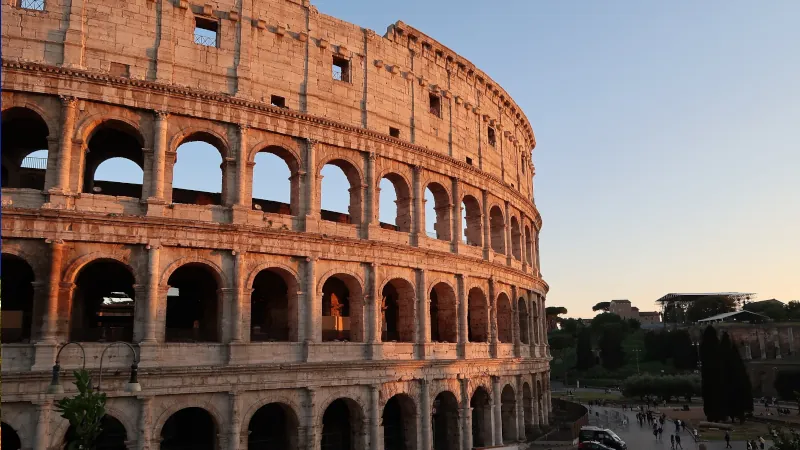
No trip to Rome is complete without visiting the iconic Colosseum. This magnificent ancient amphitheatre was completed in 80 AD and used for gladiatorial contests and public spectacles. When you stand in the middle of the arena, you can almost hear the roar of the crowd and imagine the gladiators in combat.
The Colosseum is an architectural and engineering marvel. The four-story amphitheatre measured 620 by 513 feet and could hold over 50000 spectators. Massive stone arches and vaults supported the building, while 80 entrances and exits ensured quick crowd movement. The arena floor had wooden floors and elaborate underground chambers and passages.
The spectacles held at the Colosseum were legendary. Gladiatorial contests pitted men against each other and wild animals like lions, leopards, elephants, and rhinos. Staged hunting events, animal parades, executions, re-enactments of famous battles, and dramas based on Classical mythology were also held. The spectacles were a way for emperors to gain popularity and show off their wealth and power.
Parts of the Colosseum were destroyed by earthquakes and used as a quarry for building materials over centuries. Major restoration efforts began in the 1990s to preserve and protect the monument. Today, the Colosseum is one of Rome’s most popular attractions, with over 4 million visitors annually exploring its architectural wonder and imagining its storied past. A modern wonder and an iconic symbol of Rome, the Colosseum is a glimpse into the grandeur of the Roman Empire at its peak.
2. Pompeii, Campania
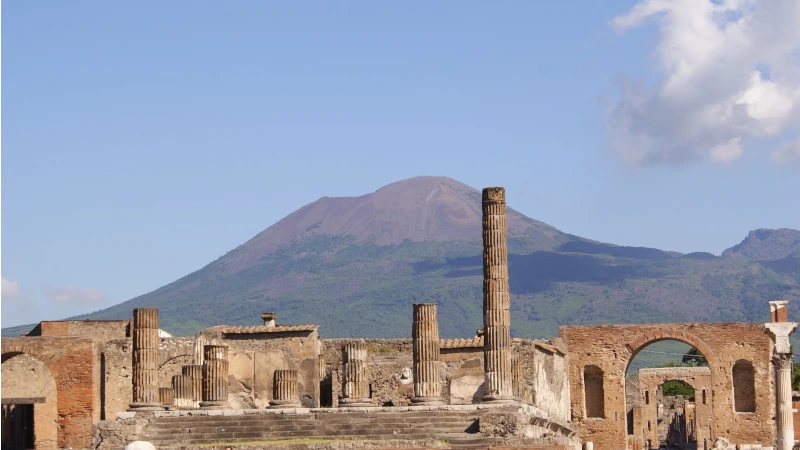
Pompeii is one of the most well-preserved Roman towns in all of Italy. Buried for centuries under volcanic ash from Mount Vesuvius, Pompeii offers a glimpse into everyday life in 79 AD. As you walk down the stone streets. You’ll see political graffiti on the walls, Shops, homes, and even an amphitheatre.
The central square of Pompeii served as the hub of political and social life. Surrounded by administrative buildings, the Forum contained statues, a fountain, and columns. Take time to admire the intricate stonework and imagine the lively debates that once echoed here.
The Temple of Jupiter stands at one end of the Forum, dedicated to the king of the Roman gods. Though damaged by the eruption, 15 of the original columns remain. Climb the steps for panoramic views of the Forum and Vesuvius looming in the distance.
One of the largest villas in Pompeii, the House of the Faun contains lavish decorations like mosaics, frescoes, and marble statues. The open-air atrium features a fountain and pool, while vivid artworks depict Greek myths in what once living and dining rooms. This prestigious house offers a glimpse into the opulent lives of Pompeii’s wealthiest citizens.
A trip to Pompeii offers a sovereign yet illuminating look at this ancient Roman town frozen in time. As you explore the well-preserved ruins, stories of political debates in the Forum, sacrifices at the Temple of Jupiter, and lavish parties in villas like the House of the Faun spring to life, transporting you back nearly 2000 years into the past. Pompeii is a vivid reminder of both the grandeur and fragility of human life.
3. Florence Cathedral, Tuscany
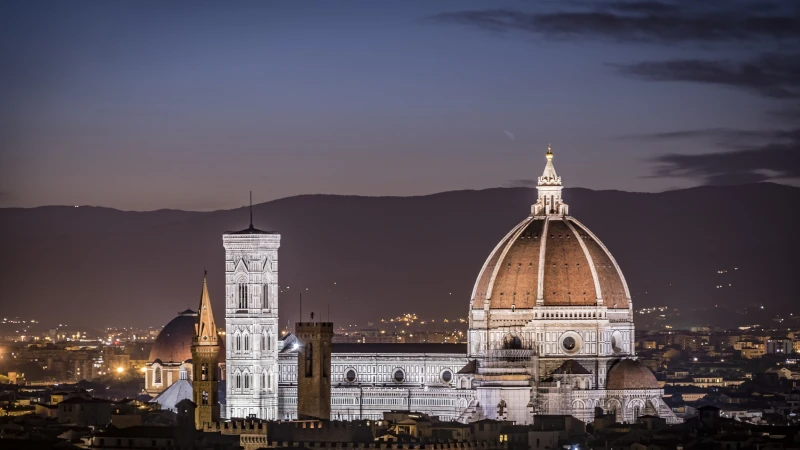
The Florence Cathedral, formally named Santa Maria del Fiore, is one of the most impressive cathedrals in Italy. Its architectural wonder awes visitors as soon as they set eyes on its massive Renaissance dome and ornate facade. The cathedral’s construction began in 1296 but the dome was only completed in 1436, making it the largest dome in the world at the time. Climbing the 463 steps to the top of the dome rewards you with panoramic views of Florence’s terracotta rooftops and the Tuscan countryside.
Inside the cathedral, you’ll find many artistic treasures. The cathedral’s most famous feature is its frescoed dome, painted with Giorgio Vasari’s masterpiece. “The Last Judgement”. The 44 stained glass windows, many dating to the 15th and 16th centuries, bathe the interior in jewel-toned light. Two statues by Michelangelo,” The Deposition” and “St. Matthew”, flank the altar. Don’t miss Giotto’s Bell Tower next to the cathedral, considered one of the most elegant and harmonious bell towers in Italy.
Aside from its architectural and artistic wonders, the Florenc Cathedral stands as an emblem of the city’s history. Its construction spanned more than 600 years, with later additions reflecting the changing artistic styles of the Renaissance and Baroque periods in Italy. Today, the cathedral remains the seat of the Archdiocese of Florence and continues to function as a church, holding regular masses and religious events.
Visiting the Florence Cathedral is a must for understanding the artistic heritage of Florence and gaining insight into the cultural history of this enchanting city. Let yourself be awed by its grandeur, immersed in its beauty, and humbled by its living presence in Florenc today. A visit here will stay with you, elevating your spirit each time you conjure its memory.
4. Roman Forum, Rome
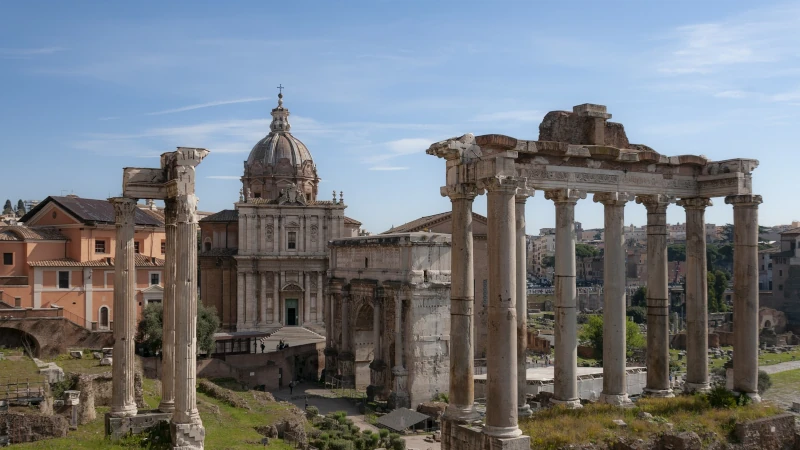
No trip to Rome is complete without exploring the Roman Forum, the central area of public life in ancient Tome. For over a thousand years, the Forum was the centre of commerce, politics, religion, and daily life in the Roman Empire.
The Curia was the Roman Senate house, where senators debated laws and politics. Just north of the Curia is the Basilica and ancient courthouse. While most of the buildings are in ruins, you can still make out the layout and get a sense of the hustle and bustle in the Forum during its prime.
The Forum contains some of the oldest Roman temples, including the Temple of Vesta, the Temple of Saturn, and the Temple of Castor and Pollux. The Temple of Besta was especially important, housing the sacred flame of Besta, the goddess of the hearth. The Vestal Virgins maintained the temple and the flame.
As you exit the Forum, you’ll pass under the Arch of Septimus Severus, a majestic triumphal arch built to celebrate military victories. It’s one of the best-preserved monuments in the Forum, with intricate carvings depicting battle scenes and the conquest of Mesopotamia.
Walking through the Roman Forum is like taking a step back in time. While only fragments of its former glory remain, the Forum gives you a glimpse into what life was like in the centre of the mighty Roman Empire. You can almost hear the speeches echoing from the Senate House, smell the incense wafting from the temples, and see carts rattling down the cobblestone streets. A visit to the Roman Forum is a must for anyone fascinated by Roman history.
5. St. Mark’s Basilica, Venice
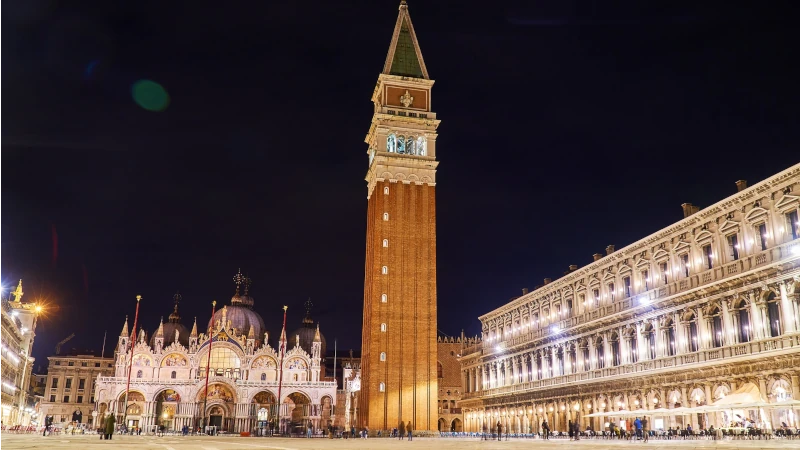
One of the most stunning sights in all of Venice is St. Mark’s Basilica, a historic church located in the Piazza San Marco. This magnificent basilica is an architectural wonder, with its Byzantine design and gold mosaics.
As you enter the basilica, you’ll gasp at the golden ceiling and the brightly coloured marble columns. The basilica has five domes, with the large dome nicknamed the “Pantheon of Venice”. The basilica’s marble floor has geometric designs, while gold mosaics depicting religious scenes cover the upper wall and domes. The altarpiece, called the Pala d’Oro, features gold and precious gems.
St. Mark’s Basilica has been Venice’s cathedral since 1807 and is one of the best examples of Italo-Byzantine architecture. Built in the 11th century to house the release of St. Mark the Evangelist, the basilica has been modified over centuries and reflects the architectural influences of the Eastern and Western empires. The basilica is a UNESCO World Heritage Site, recognised as an important cultural treasurer.
Adjacent to the basilica is the Campanile di San Marco, the bell tower of St. Mark’s Square. The 98-meter bell tower offers sweeping views of Venice from its observation deck. Climb the steep stairs or take the elevator to the top of the bell tower and gaze out at the red rooftops, canals, and the church dome of Venice. The bell tower has been rebuilt twice after collapsing.
6. Sistine Chapel, Vatican City
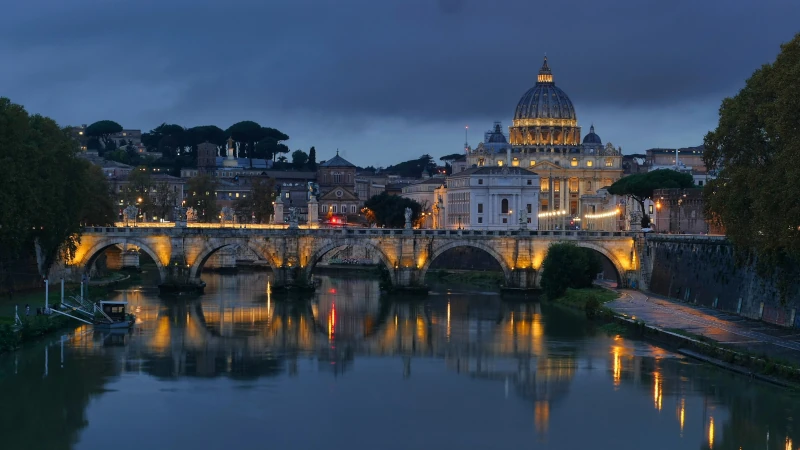
No trip to Roam is complete without visiting the Vatican City and its crown jewel, the Sistine Chapel. When you first enter the Sistine Chapel, gaze up at the ceiling and prepare to be awestruck by Michelangelo’s famous fresco. Completed in 1512, the massive artwork spans the entire ceiling, covering over 5000 square feet. At the centre, you’ll see his iconic image of God reaching out to touch Adam to give him life. The bright colours and masterful details seem impossibly vivid, even today.
As you walk around the chapel, you’ll also spot Michelangelo’s large fresco of the Last Judgment on the wall behind the altar. His genius is on full display in this massive and intensely dramatic work. The Sistine Chapel is a monumental achievement in Renaissance art that continues to inspire wonder in all who view it.
When the time comes to leave the Sistine Chapel, you may feel a twinge of sadness, But the good news is, within the Vatican Museums and St. Peter’s Basilica, there are many more artistic and architectural masterpieces to explore. The Vatican City holds some of the world’s greatest cultural treasures, so take your time and soak in all of its beauty.
afterwards, head to St. Peter’s Square, the stunning public space in front of St. Peter’s Basilica. Flanked by 284 columns, it was designed in the 17th century by Gian Lorenzo Bernini. When the Pope is in residence, he often gives public addresses here. Grab a gelato find a seat on the steps of the esquire and do some people-watching. There’s always a lively crowd of tourists, nuns, priests, and locals passing through.
7. Leaning Tower of Pisa, Tuscany
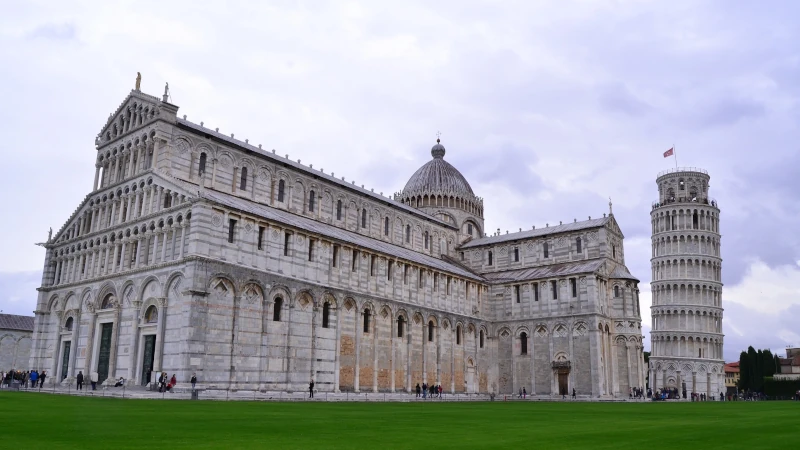
The Leaning Tower of Pisa is one of the most iconic landmarks in Italy and a must-see on any Tuscan adventure. Construction of the tower began in 1173 but took over 200 years to complete due to wars and other interruptions. However, the soft ground on which the tower is built caused it to start tilting during construction. Today, the tilt is about 4 degrees.
Even from the ground, the Leaning Tower is an architectural and engineering marvel. Made of white marble, the tower features ornate arches and columns in the Romanesque style. The tilt gives the tower a quirky beauty and sense of movement. Walk around the base of the tower to view it from different angles and spot the details.
While in Pisa, also explore the Pisa Cathedral and Baptistry, which are located in the same piazza as the Leaning Tower. The cathedral, with its striking black and white facade, was built over several centuries beginning in 1064. The baptistry, with its distinctive domed roof, is considered one of the finest Romanesque buildings in Italy.
8. Hadrian’s Villa, Tivoli
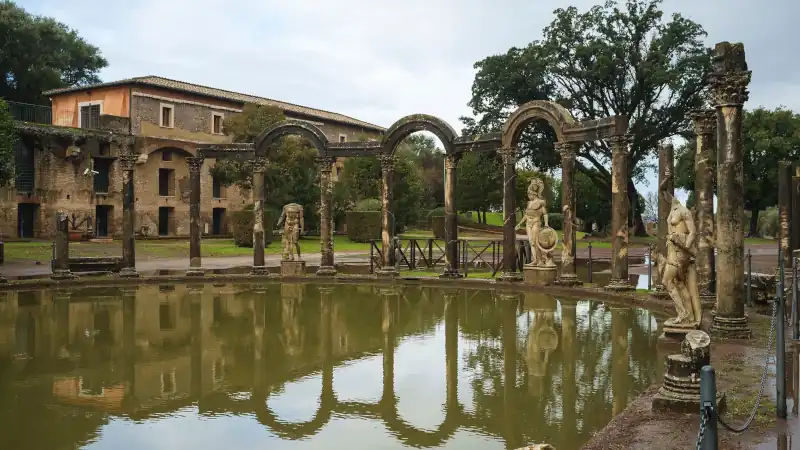
Hadrian’s Villa is one of the largest Roman imperial villas ever built, covering nearly 250 acres. Emperor Hadrian designed it himself in the 2nd century AD as an elaborate retreat. The sprawling complex contains architectural marvels, gardens, baths, libraries and more. All were meticulously constructed to suit Hadrian’s eclectic tastes.
When you visit Hadrian’s Villa, make sure to see the Teatro Marittimo, a domed structure with a central pool. Hadrian likely used it for intimate celebrations. The Pencil, an open garden surrounded by a columned portico, was a place for walking and conversation. The Canopus, a long narrow pool representing the Nile channel at Canopus in Egypt, is one of the villa’s most iconic landmarks.
Other highlights include the bath complexes, the Freek library, and temples dedicated to Egyptian deities like Isis and Serapis. The vast grounds also contain many other structures in various states of preservation, like the nymphaeum for enjoying the gardens, the triclinium where Hadrian hosted banquets, and lodgings for guests and servants.
Hadrian was a passionate traveller and student of architecture, so his billa incorporated designs from around the Roman Empire and beyond. The eclectic mix of styles, from Egyptian obelisks to Greek temples to Toman baths provides a glimpse into the cultural influences that shaped the empire. The villa is a true artistic an architectural wonder, reflecting the genius, vision and lavish lifestyle of its creator.
9. Palazzo Vecchio, Florence
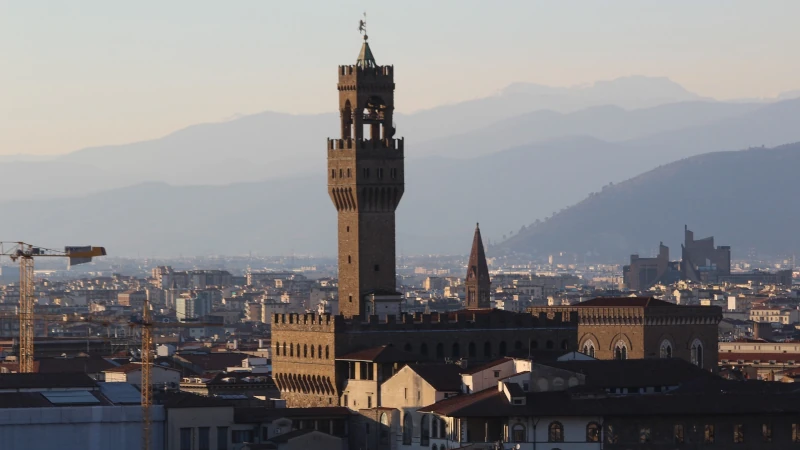
The massive stone palace with its iconic tower is the very symbol of Florence. As the city’s town hall for centuries, the Palazzo Vecchio is the centre of political life.
When you enter the Palazzo Vecchio, you’ll first walk through the striking courtyard, with its marble pillars and heraldic statues. Then head inside to explore the lavish rooms, including the breathtaking Salone dei Cinquecento. This vast hall is decorated with epic 16th-century frescoes glorifying |Florence and the Medici family. Don’t miss the secret passageway that leads to the private rooms of Francesco I de’ Medici.
Another must-see is the tower, which offers panoramic views of Florence from its top. Climb the 418 steps for a stunning 360° view of the city’s terracotta rooftops, the Duomo, and the rolling Tuscan hills. The tower was built in the 1300s as a military fortress, giving the palace its medieval appearance.
The Palazzo Vecchio is like a walk through Florence’s dynamic history. Originally built in the early 1300s, the palace was later renovated to showcase the grandeur and wealth of the Medici dynasty. You’ll see a mix of architectural styles, from the fortress-like medieval structure to the lavish Renaissance rooms decorated by famed artists like Vasari.
That wraps up some of our top 9 historical sites list in Italy to visit, From ancient Roman ruins to medieval castles and cathedrals, Italy is chock full of incredible places that let you step back in time.
